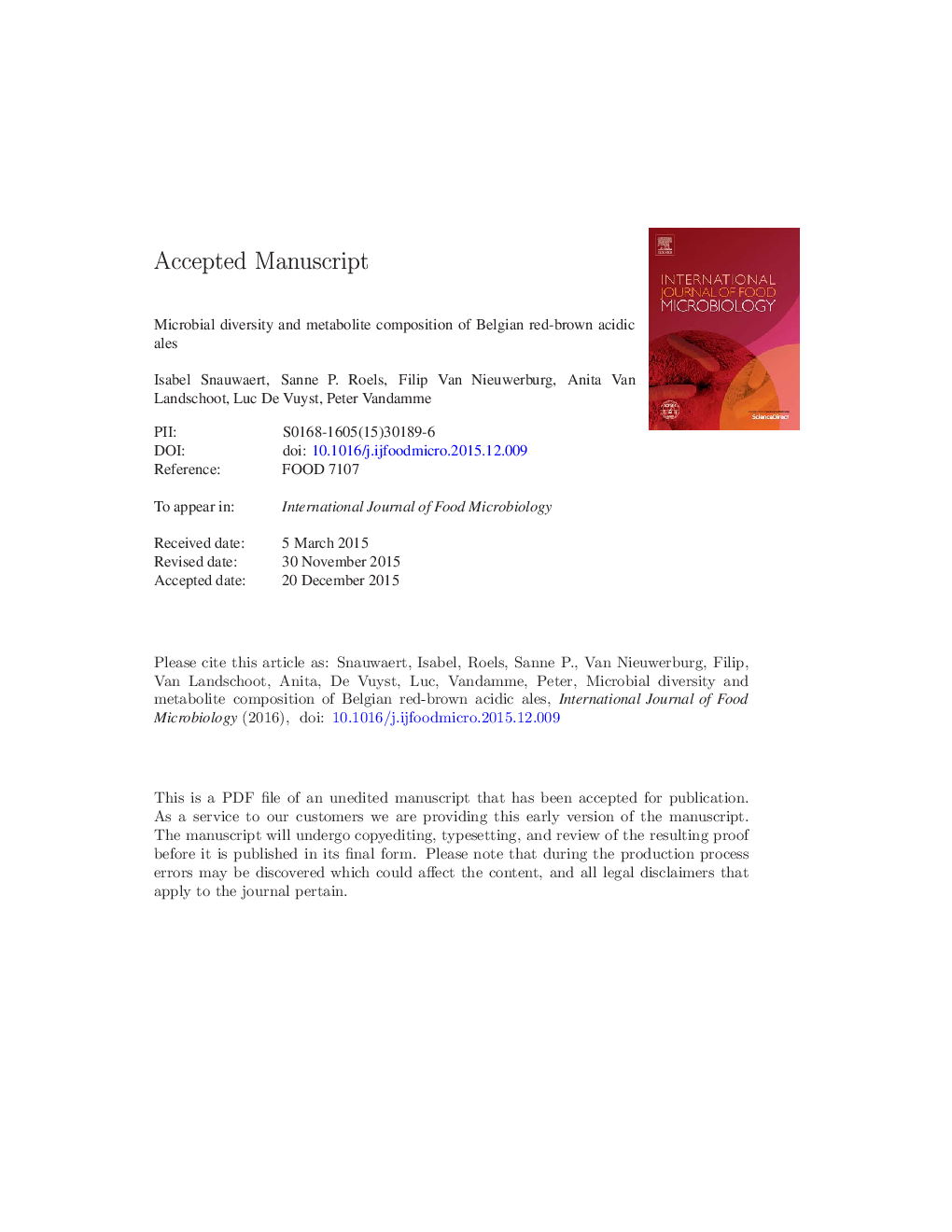| Article ID | Journal | Published Year | Pages | File Type |
|---|---|---|---|---|
| 6289805 | International Journal of Food Microbiology | 2016 | 36 Pages |
Abstract
Belgian red-brown acidic ales are sour and alcoholic fermented beers, which are produced by mixed-culture fermentation and blending. The brews are aged in oak barrels for about two years, after which mature beer is blended with young, non-aged beer to obtain the end-products. The present study evaluated the microbial community diversity of Belgian red-brown acidic ales at the end of the maturation phase of three subsequent brews of three different breweries. The microbial diversity was compared with the metabolite composition of the brews at the end of the maturation phase. Therefore, mature brew samples were subjected to 454 pyrosequencing of the 16S rRNA gene (bacteria) and the internal transcribed spacer region (yeasts) and a broad range of metabolites was quantified. The most important microbial species present in the Belgian red-brown acidic ales investigated were Pediococcus damnosus, Dekkera bruxellensis, and Acetobacter pasteurianus. In addition, this culture-independent analysis revealed operational taxonomic units that were assigned to an unclassified fungal community member, Candida, and Lactobacillus. The main metabolites present in the brew samples were l-lactic acid, d-lactic acid, and ethanol, whereas acetic acid was produced in lower quantities. The most prevailing aroma compounds were ethyl acetate, isoamyl acetate, ethyl hexanoate, and ethyl octanoate, which might be of impact on the aroma of the end-products.
Keywords
Related Topics
Life Sciences
Agricultural and Biological Sciences
Food Science
Authors
Isabel Snauwaert, Sanne P. Roels, Filip Van Nieuwerburg, Anita Van Landschoot, Luc De Vuyst, Peter Vandamme,
